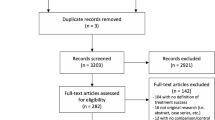Abstract
Introduction and hypothesis
A standardized system for reporting pelvic organ prolapse is important for clinical communication, patient follow-up, and meaningful comparisons between studies. In 1996, the description of the Pelvic Organ Prolapse Quantification system (POPQ) was published. We hypothesized that its use in published articles of specialized journals would increase over time.
Methods
Articles from eight journals in 2004 and 2007 were included if any attempt to grade prolapse was mentioned. Reviews, editorials, and abstracts were excluded.
Results
Use of POPQ increased from 64.9% to 82.1% (p = 0.01) while other systems decreased. POPQ was used more frequently in the US than other countries. Urologists used POPQ less and Baden–Walker more frequently than other specialists.
Conclusions
Use of POPQ has increased in the period studied. This trend was observed in all the subgroups analyzed, showing that POPQ is being adopted as the universal language of prolapse in the published literature.



Similar content being viewed by others
Abbreviations
- AJOG:
-
American Journal of Obstetrics and Gynecology
- AUGS:
-
American Urogynecologic Association
- BW:
-
Baden–Walker system
- ICS:
-
International Continence Society
- Int Urogynecol J:
-
International Urogynecology Journal
- MRI:
-
Magnetic resonance imaging
- Neurourol&Urodyn:
-
Neurourology and Urodynamics
- NS:
-
Not specified systems
- Ob/Gyn:
-
Obstetrics and Gynecology
- OS:
-
Other specified systems
- POP:
-
Pelvic organ prolapse
- POPQ:
-
Pelvic Organ Prolapse Quantification system
- SGS:
-
Society of Gynecologic Surgeons
- US:
-
United States
References
Bump RC, Mattiasson A, Bø K, Brubaker LP, DeLancey JO, Klarskov P et al (1996) The standardization of terminology of female pelvic organ prolapse and pelvic floor dysfunction. Am J Obstet Gynecol 175(1):10–17
Muir TW, Stepp KJ, Barber MD (2003) Adoption of the pelvic organ prolapse quantification system in peer-reviewed literature. Am J Obstet Gynecol 189(6):1632–1635
Auwad W, Freeman RM, Swift S (2004) Is the pelvic organ prolapse quantification system (POPQ) being used? A survey of members of the International Continence Society (ICS) and the American Urogynecologic Society (AUGS). Int Urogynecol J Pelvic Floor Dysfunct 15(5):324–327
Scotti RJ, Flora R, Greston WM, Budnick L, Hutchinson-Colas J (2000) Characterizing and reporting pelvic floor defects: the revised New York classification system. Int Urogynecol J Pelvic Floor Dysfunct 11(1):48–60
Vardy MD, Lindsay R, Scotti RJ, Mikhail M, Richart RM, Nieves J et al (2003) Short-term urogenital effects of raloxifene, tamoxifen and estrogen. Am J Obstet Gynecol 189(1):81–88
Swift S, Morris S, McKinnie V, Freeman R, Petri E, Scotti RJ et al (2006) Validation of a simplified technique for using the POPQ pelvic organ prolapse classification system. Int Urogynecol J Pelvic Floor Dysfunct 17(6):615–620
de Barros Moreira Lemos NL, Flores Auge AP, Lunardelli JL, Brites Frade A, Frade CL, de Oliveira AL et al (2007) Optimizing pelvic organ prolapse research. Int Urogynecol J Pelvic Floor Dysfunct 18(6):609–611
Steele A, Mallipeddi P, Welgoss J, Soled S, Kohli N, Karram M (1998) Teaching the pelvic organ prolapse quantification system. Am J Obstet Gynecol 179(6):1458–1463
Geiss IM, Riss PA, Hanzal E, Dungl A (2007) A simple teaching tool for training the pelvic organ prolapse quantification system. Int Urogynecol J Pelvic Floor Dysfunct 18(9):1003–1005
Conflicts of interest
No financial support was received for this study. Alejandro Treszezamsky, Lauren Rascoff, and Azin Shahryarinejad have no conflict of interest to report. Michael Vardy has received grant support from Astellas, has been a speaker for Astellas, GSK, and Wyeth, and has acted as a consultant for Astellas, Bard, and Wyeth.
Author information
Authors and Affiliations
Corresponding author
Additional information
No financial support was received for this study.
Rights and permissions
About this article
Cite this article
Treszezamsky, A.D., Rascoff, L., Shahryarinejad, A. et al. Use of pelvic organ prolapse staging systems in published articles of selected specialized journals. Int Urogynecol J 21, 359–363 (2010). https://doi.org/10.1007/s00192-009-1044-1
Received:
Accepted:
Published:
Issue Date:
DOI: https://doi.org/10.1007/s00192-009-1044-1




